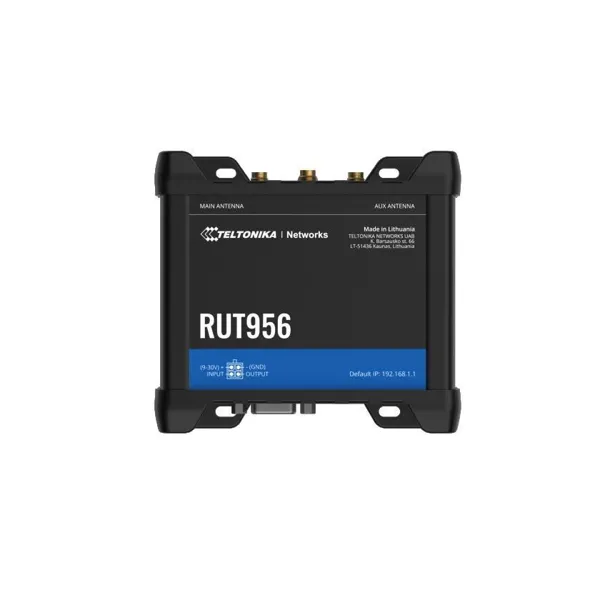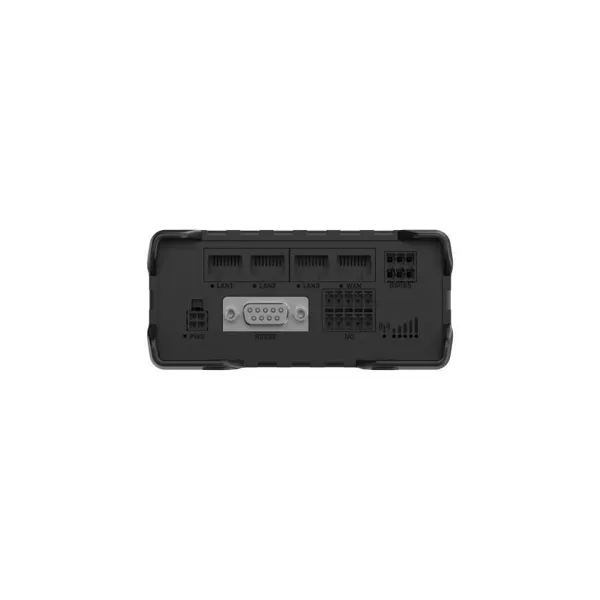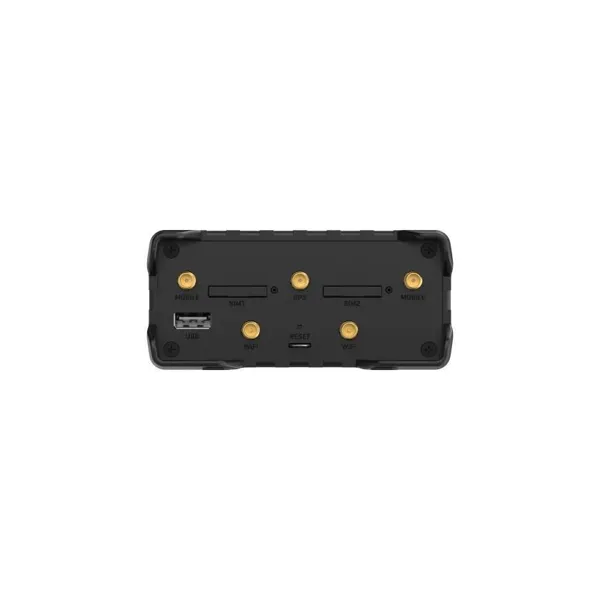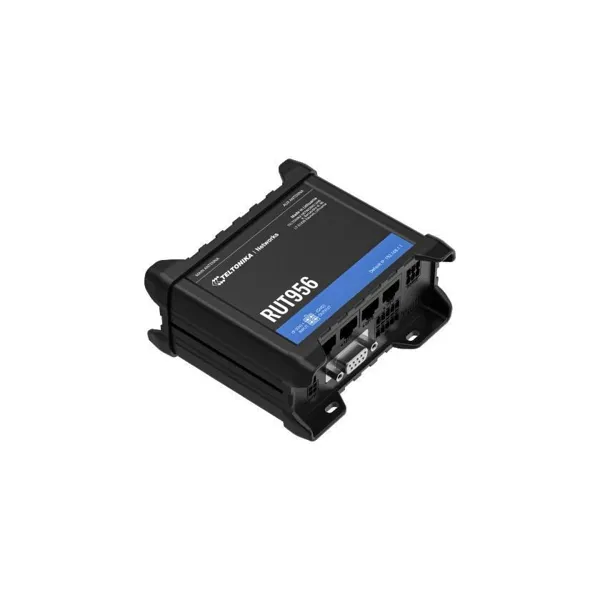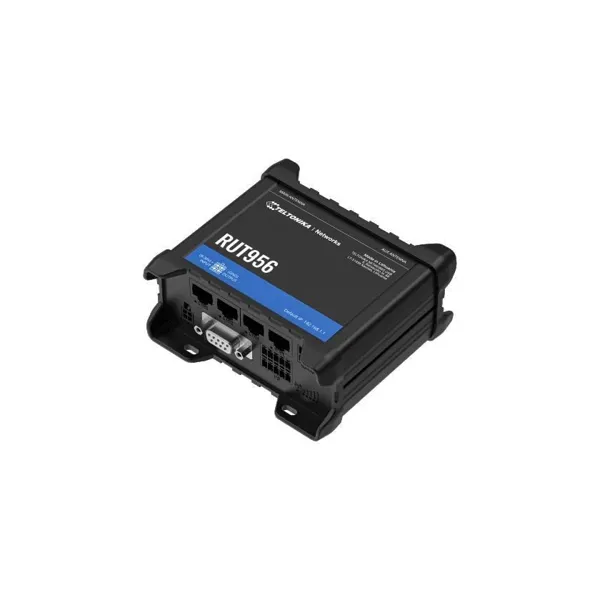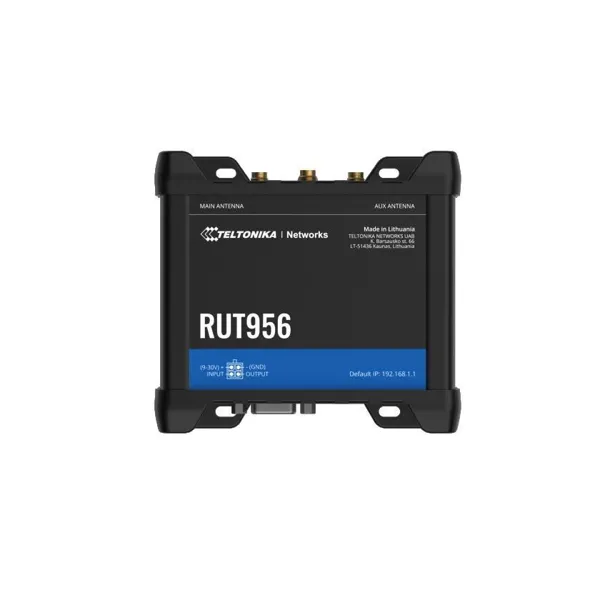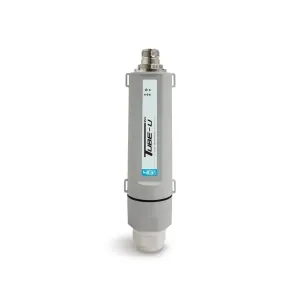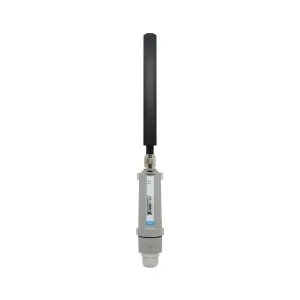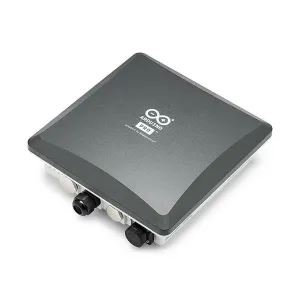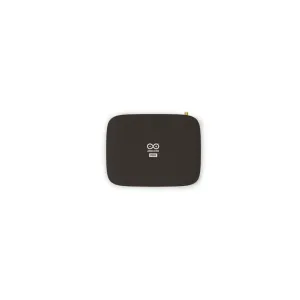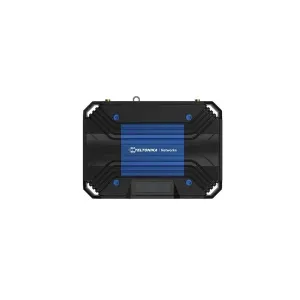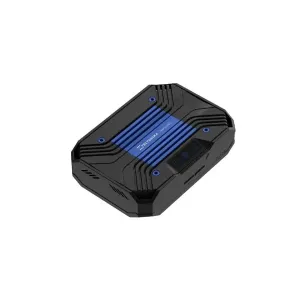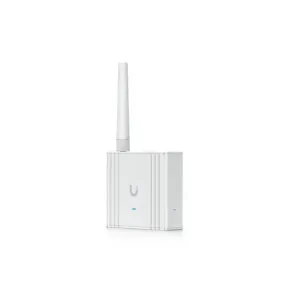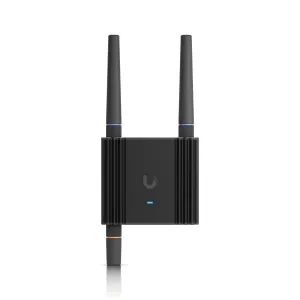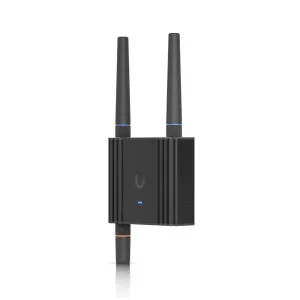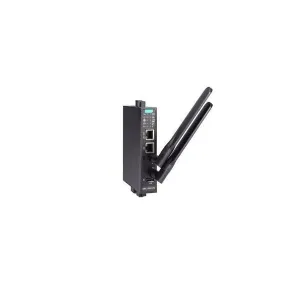Teltonika – RUT956_GLOBAL – RUT956 Global – industrial 4 GLTE router, Cat 4, up to 150 Mbps
incl. 19% VAT plus shipping costs
RUT956 is an industrial router that combines cellular, Wi-Fi and wired connectivity options with automatic WAN failover and GNSS capabilities. Serial communication interfaces enable integration of a wide range of devices into the overall ecosystem,…
| SKU | 386902 |
|---|---|
| EAN | 4251876857069 |
| MPN | RUT956_GLOBAL |
| Categories | Networking, 5G / 4G- , LTE-, LoRa-Gateways |
| Tags | 2G/3G/4G/5G Router/Gateway, Networking, Router, Teltonika, Top100-30 |
RUT956 is an industrial router that combines cellular, Wi-Fi and wired connectivity options with automatic WAN failover and GNSS capabilities. Serial communication interfaces enable integration of a wide range of devices into the overall ecosystem, while I/O and advanced RutOS software facilitate device control, automation and event notification.
Specification
MOBILE
– Mobile module: 4G (LTE) – Cat 4 up to 150 Mbps, 3G – up to 42 Mbps, 2G – up to 236.8 kbps
– SIM switch: 2 SIM cards, auto-switch cases: weak signal, data limit, SMS limit, roaming, no network, network denied, data connection error, SIM idle protection
– Status: IMSI, ICCID, operator, operator status, data connection status, network type, bandwidth, connected band, signal strength (RSSI), SINR, RSRP, RSRQ, EC/IO, RSCP, data sent/received, LAC, TAC, cell ID, ARFCN, UARFCN, EARFCN, MCC and MNC
– SMS: SMS status, SMS configuration, send/read SMS via HTTP POST/GET, EMAIL to SMS, SMS to EMAIL, SMS to HTTP, SMS to SMS, scheduled SMS, SMS autoreply, SMPP
– USSD: Supports sending and reading of Unstructured Supplementary Service Data messages
– Black/white list: Black/white list of operators (by country or individual operators)
– Multiple PDN: Possibility to use different PDNs for multiple network accesses and services
– Band management: Band lock, display of the status of the band in use
– APN: Auto APN
– Bridge: Direct connection (bridge) between mobile ISP and device in the LAN
– Passthrough: Router assigns its mobile WAN IP address to another device in the LAN
WIRELESS
– Wireless mode: IEEE 802.11b/g/n, Access Point (AP), Station (STA)
– Wi-Fi security: WPA2-Enterprise – PEAP, WPA2-PSK, WPA-EAP, WPA-PSK, WPA3-SAE, WPA3-EAP, OWE; AES-CCMP, TKIP, auto-cipher modes, client separation, EAP-TLS with PKCS#12 certificates, deactivation of Auto-Reconnect
– SSID/ESSID: SSID stealth mode and access control based on MAC address
– Wi-Fi users: Up to 100 simultaneous connections
– Wireless connectivity features: Fast roaming (802.11r), Relayd, BSS transition management (802.11v), Radio resource metering (802.11k)
– Wireless MAC filter: Whitelist, Blacklist
NETWORK
– Hotspot: Captive portal (hotspot), internal/external radius server, radius MAC authentication, SMS authorisation, internal/external landing page, walled garden, user scripts, URL parameters, user groups, individual user or group restrictions, user management, 9 default customisable themes and the ability to upload and download customised hotspot themes
– Routing: Static routing, dynamic routing (BGP, OSPF v2, RIP v1/v2, EIGRP, NHRP), policy-based routing
– Network protocols: TCP, UDP, IPv4, IPv6, ICMP, NTP, DNS, HTTP, HTTPS, SFTP, FTP, SMTP, SSL/TLS, ARP, VRRP, PPP, PPPoE, UPNP, SSH, DHCP, Telnet, SMPP, SNMP, MQTT, Wake On Lan (WOL)
– VoIP passthrough support: H.323- and SIP-alg protocol NAT helpers that enable the correct routing of VoIP packets
– Connection monitoring: Ping Reboot, Wget Reboot, Periodic Reboot, LCP and ICMP for link inspection
– Firewall: Port forwarding, traffic rules, user-defined rules
– DHCP: Static and dynamic IP assignment, DHCP relay, DHCP server configuration, status, static leases: MAC with wildcards
– QoS / Smart Queue Management (SQM): traffic priority queuing by source/destination, service, protocol or port, WMM, 802.11e
– DDNS: Supports >25 service providers, others can be configured manually
– Network backup: Wi-Fi WAN, Mobile, VRRP, wired options, any of which can be used as automatic failover
– Load balancing: Balancing of Internet traffic across multiple WAN connections
– SSHFS: Ability to mount a remote file system via the SSH protocol
ETHERNET
– WAN: 1 x WAN port 10/100 Mbps, compliance with IEEE 802.3, IEEE 802.3u, 802.3az standards, supports auto MDI/MDIX
– LAN: 3 x LAN ports, 10/100 Mbps, compliant with IEEE 802.3, IEEE 802.3u standards, supports auto MDI/MDIX
SECURITY
– Authentication: Pre-shared key, digital certificates, X.509-certificates, TACACS+, radius, blocking of IP and login attempts, time-based login blocking, integrated random generator for passwords
– Firewall: Preconfigured firewall rules can be activated via WebUI, unlimited firewall configuration via CLI; DMZ; NAT; NAT-T
– Attack protection: DDOS protection (SYN flood protection, SSH attack protection, HTTP/HTTPS attack protection), port scan protection (SYN-FIN, SYN-RST, X-mas, NULL flags, FIN scan attacks)
– VLAN: Port and tag-based VLAN separation
– Mobile quota control: mobile data limit, customisable time period, start time, warning limit, phone number
– WEB filter: blacklist to block unwanted websites, whitelist to specify only allowed websites
– Access control: flexible access control of SSH, web interface, CLI and Telnet
VPN
– OpenVPN: multiple clients and a server can run simultaneously, 27 encryption methods
– OpenVPN encryption: DES-CBC 64, RC2-CBC 128, DES-EDE-CBC 128, DES-EDE3-CBC 192, DESX-CBC 192, BF-CBC 128, RC2-40-CBC 40, CAST5-CBC 128, RC2-64-CBC 64, AES-128-CBC 128, AES-128-CFB 128, AES-128-CFB1 128, AES-128-CFB8 128, AES-128-OFB 128, AES-128-GCM 128, AES-192-CFB 192, AES-192-CFB1 192, AES-192-CFB8 192, AES-192-OFB 192, AES-192-CBC 192, AES-192-GCM 192, AES-256-GCM 256, AES-256-CFB 256, AES-256-CFB1 256, AES-256-CFB8 256, AES-256-OFB 256, AES-256-CBC 256
– IPsec: IKEv1, IKEv2, with 14 encryption methods for IPsec (3DES, DES, AES128, AES192, AES256, AES128GCM8, AES192GCM8, AES256GCM8, AES128GCM12, AES192GCM12, AES256GCM12, AES128GCM16, AES192GCM16, AES256GCM16)
– GRE: GRE tunnels, GRE tunnels via IPsec support
– PPTP, L2TP: Client/server instances can run simultaneously, L2TPv3, L2TP via IPsec support
– Stunnel: Proxy for adding TLS encryption functionality to existing clients and servers without changes to the programme code
– DMVPN: Method for building scalable IPsec VPNs
– SSTP: Support for SSTP client instances
– ZeroTier: ZeroTier VPN client support
– WireGuard: WireGuard VPN client and server support
– Tinc: Tinc provides encryption, authentication and compression in its tunnels. Client and server support.
BACNET
– Supported modes: Router
– Supported connection types: RS485, TCP
OPC UA
– Supported modes: Client, Server
– Supported connection types: TCP
MODBUS
– Supported modes: Server, Client
– Supported connection types: RTU (RS232, RS485), TCP, USB
– User-defined registers: MODBUS TCP user-defined register block requests that can be read/written to a file within the router and used to extend MODBUS TCP client functionality
– Supported data formats: 8-bit: INT, UINT; 16-bit: INT, UINT (MSB or LSB first); 32-bit: float, INT, UINT (ABCD (big-endian), DCBA (little-endian), CDAB, BADC), HEX, ASCII
DATATO SERVER
– Protocol: HTTP(S), MQTT, Azure MQTT, Kinesis
MQTTGATEWAY
– Modbus MQTT Gateway: Enables sending commands and receiving data from the MODBUS server via MQTT broker
DNP3
– Supported modes: Station, Outstation
– Supported connection types: RS232, RS485, TCP, USB
DLMS
– DLMS support: DLMS – standard protocol for exchanging meter data
API
– Teltonika Networks Web API (beta) support: extend the capabilities of your device by using a set of configurable API endpoints to retrieve or modify data. For more information, please read this documentation: https://developers.teltonika-networks.com
MONITORING & MANAGEMENT
– WEB UI: HTTP/HTTPS, status, configuration, FW update, CLI, troubleshooting, multiple event log servers, availability notifications for firmware updates, event log, system log, kernel log, internet status
– FOTA: Firmware update from server, automatic notification
– SSH: SSH (v1, v2)
– SMS: SMS status, SMS configuration, send/read SMS via HTTP POST/GET
– Call: Restart, status, mobile data on/off, outgoing on/off, answer/hang up with timer, Wi-Fi on/off
– TR-069: OpenACS, EasyCwmp, ACSLite, tGem, LibreACS, GenieACS, FreeACS, LibCWMP, Friendly tech, AVSystem
– MQTT: MQTT Broker, MQTT publisher
– SNMP: SNMP (v1, v2, v3), SNMP Trap
– JSON-RPC: Management API via HTTP/HTTPS
– RMS: Teltonika Remote Management System (RMS)
IOTPLATFORMS
– Cloud of Things: Enables monitoring of: Device data, mobile data, network information, availability
– ThingWorx: Enables monitoring of: WAN type, WAN IP, mobile provider name, mobile network signal strength, mobile network type
– Cumulocity: Enables monitoring of: Device model, revision and serial number, WAN type and IP, mobile cell ID, ICCID, IMEI, connection type, network provider, signal strength
– Azure IoT Hub: Can provide device IP, number of bytes sent/received, temperature, PIN count to Azure IoTHub server, mobile connection status, network connection status, IMEI, ICCID, model, manufacturer, Serial number, revision, IMSI, SIM status, PIN status, GSM signal, WCDMA RSCP, WCDMA EC/IO, LTE RSRP, LTE SINR, LTE RSRQ, CELL ID, operator, operator number, connection type
SYSTEM CHARACTERISTICS
– CPU: Mediatek, 580 MHz, MIPS 24KEc
– RAM: 128 MB, DDR2
– FLASH memory: 16 MB, SPI Flash
FIRMWARE/ CONFIGURATION
– WEB UI: Update FW from file, check FW on server, configuration profiles, configuration backup
– FOTA: Update FW
– RMS: Update FW/configuration for multiple devices at once
– Maintain settings: Update FW without losing the current configuration
– Reset factory settings: A full factory reset restores all system settings, including IP address, PIN and user data, to the manufacturer’s default configuration
FIRMWARECUSTOMISATION
– Operating system: RutOS (OpenWrt based Linux OS)
– Supported languages: Busybox shell, Lua, C, C++
– Development tools: SDK package with build environment
LOCATIONTRACKING
– GNSS: GPS, GLONASS, BeiDou, Galileo and QZSS
– Coordinates: GNSS coordinates via WebUI, SMS, TAVL, RMS
– NMEA: NMEA 0183
– NTRIP: NTRIP protocol (Networked Transport of RTCM via Internet Protocol)
– Server software: Supported server software TAVL, RMS
– Geofencing: Configurable multiple geofence zones
SERIAL
– RS232: DB9 connector, RS232 (with RTS and CTS flow control)
– RS485: RS485 full duplex (4 wires) and half duplex (2 wires). 300-115200 baud rate
– Serial functions: Console, serial over IP, modem, MODBUS gateway, NTRIP client
USB
– Data rate: USB 2.0
– Applications: Samba sharing, USB-to-serial
– External devices: Option to connect an external hard drive, a flash drive, an additional modem, a printer, a USB serial adapter
– Storage formats: FAT, FAT32, exFAT, NTFS (read-only), ext2, ext3, ext4
INPUT / OUTPUT
– Input: 1 x digital, dry input (0 – 3 V), 1 x digital, galvanically isolated input (0 – 30 V), 1 x analogue input (0 – 24 V), 1 x digital, non-isolated input (on 4-pin power connection, 0 – 5 V are detected as logic low, 8 – 30 V are detected as logic high)
– Output: 1 x digital open collector output (30 V, 250 mA), 1 x SPST relay output (40 V, 4 A), 1 x digital open collector output (30 V, 300 mA, via 4-pin power connection)
– Events: Email, RMS, SMS
– I/O juggler: allows specific I/O conditions to be set to trigger events
POWER
– Connection: 4-pin industrial DC socket
– Input voltage range: 9 – 30 VDC, reverse polarity protection; overvoltage protection >31 VDC 10us max
– PoE (passive): Passive PoE via free pairs. Power supply option via LAN1 port, not compatible with IEEE802.3af, 802.3at and 802.3bt, mode B, 9 – 30 VDC
– Power consumption: < 2 W idle, < 7 W max
PHYSICAL INTERFACES
– Ethernet: 4 x RJ45 ports, 10/100 Mbps
– I/Os: 2 x inputs and 2 x outputs on 10-pin industrial socket, 1 x digital input and 1 x digital output on 4-pin power connector (available from HW revision 1600)
– Status LEDs: 1 x two-colour connection status, 5 x mobile connection strength, 4 x ETH status, 1 x power
– SIM: 2 x SIM slots (Mini SIM – 2FF), 1.8 V/3 V, external SIM holder, eSIM (optional)
– Power: 1 x 4-pin power connector
– Input/Output: 1 x 10-pin industrial socket for inputs/outputs
– Antennas: 2 x SMA for LTE, 2 x RP-SMA for Wi-Fi, 1 x SMA for GNSS
– USB: 1 x USB-A connector for external devices
– RS232: 1 x DB9 socket
– RS485: 1 x 6-pin industrial socket
– Reset: Reboot/User default reset/Factory reset button
PHYSICAL DATA
– Housing material: aluminium housing, plastic panels
– Dimensions (W x H x D): 110 x 50 x 100 mm
– Weight: 287 g
– Mounting options: DIN rail, wall mounting, flat surface (all require additional kit)
OPERATING ENVIRONMENT
– Operating temperature: -40 °C to 75 °C
– Operating humidity: 10 % to 90 % non-condensing
– Protection class: IP30
REGULATORY & TYPE APPROVALS
– Regulations: CE, UKCA, ANRT, Kenya, CITC, ICASA, FCC, IC, PTCRB, Anatel, RCM, Giteki, IMDA, ECE R118, E-mark, UL/CSA Safety, CB, RoHS, REACH, NCC, C1D2
– Network operators: AT&T, Verizon, T-Mobile
EMC EMISSIONS & IMMUNITY
– Standards: EN 55032:2015 + A11:2020
EN 55035:2017 + A11:2020
EN IEC 61000-3-2:2019 + A1:2021
EN 61000-3-3:2013 + A1:2019
EN 301 489-1 V2.2.3
EN 301 489-17 V3.2.4
EN 301 489-19 V2.1.1
EN 301 489-52 V1.2.1
– ESD: EN 61000-4-2:2009
– Radiation immunity: EN 61000-4-3:2020
– EFT: EN 61000-4-4:2012
– Immunity to overvoltages (AC mains connection): EN 61000-4-5:2014 + A1:2017
– CS: EN 61000-4-6:2014
– DIP: EN 61000-4-11:2020
RF
– Standards: EN 300 328 V2.2.2
EN 301 511 V12.5.1
EN 301 908-1 V15.2.1
EN 301 908-2 V13.1.1
EN 301 908-13 V13.2.1
EN 303 413 V1.1.1
SAFETY(ORDINARY LOCATIONS)
– Standards: CE: EN IEC 62368-1:2020 + A11:2020, EN IEC 62311:2020, EN 50665:2017
RCM: AS/NZS 62368.1:2022
CB: IEC 62368-1:2018
UL/CSA Safety: UL 62368-1 (3rd ed., rev. 13 December 2019), C22.2 No. 62368-1:19 (3rd ed., Rev. 13 December 2019)
SAFETY (HAZARDOUS LOCATIONS)
– Standards: UL/CSA Safety: UL 121201, 9th Ed., Rev. 1 April 2021, CAN/CSA C22.2 No. 213, 3rd Ed. April 2021
– Hazardous Environments: Class I, Division 2, Groups A, B, C, D
Class I, Zone 2, Group IIC
-40°C ≤ Ta ≤ 75°C, T4, IP30

